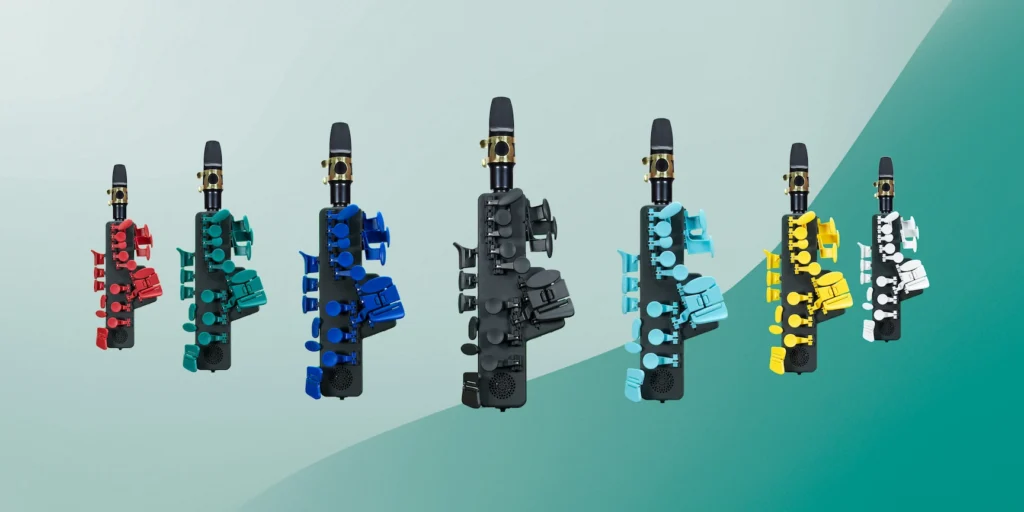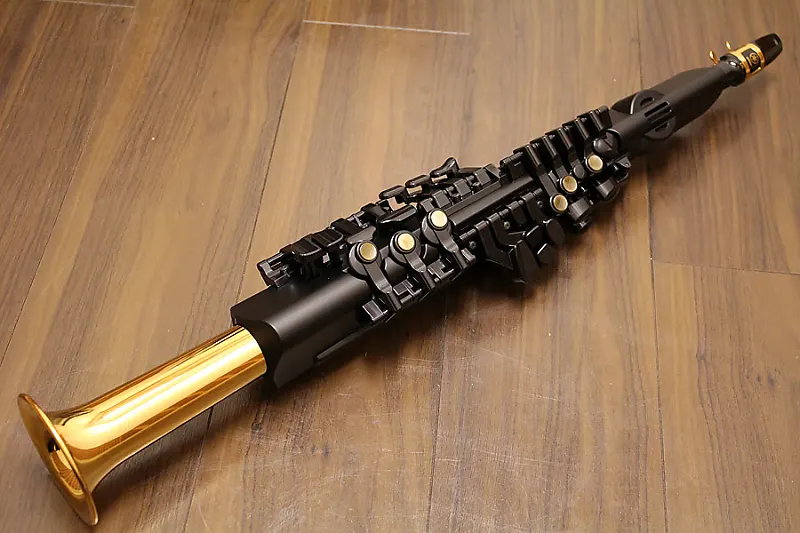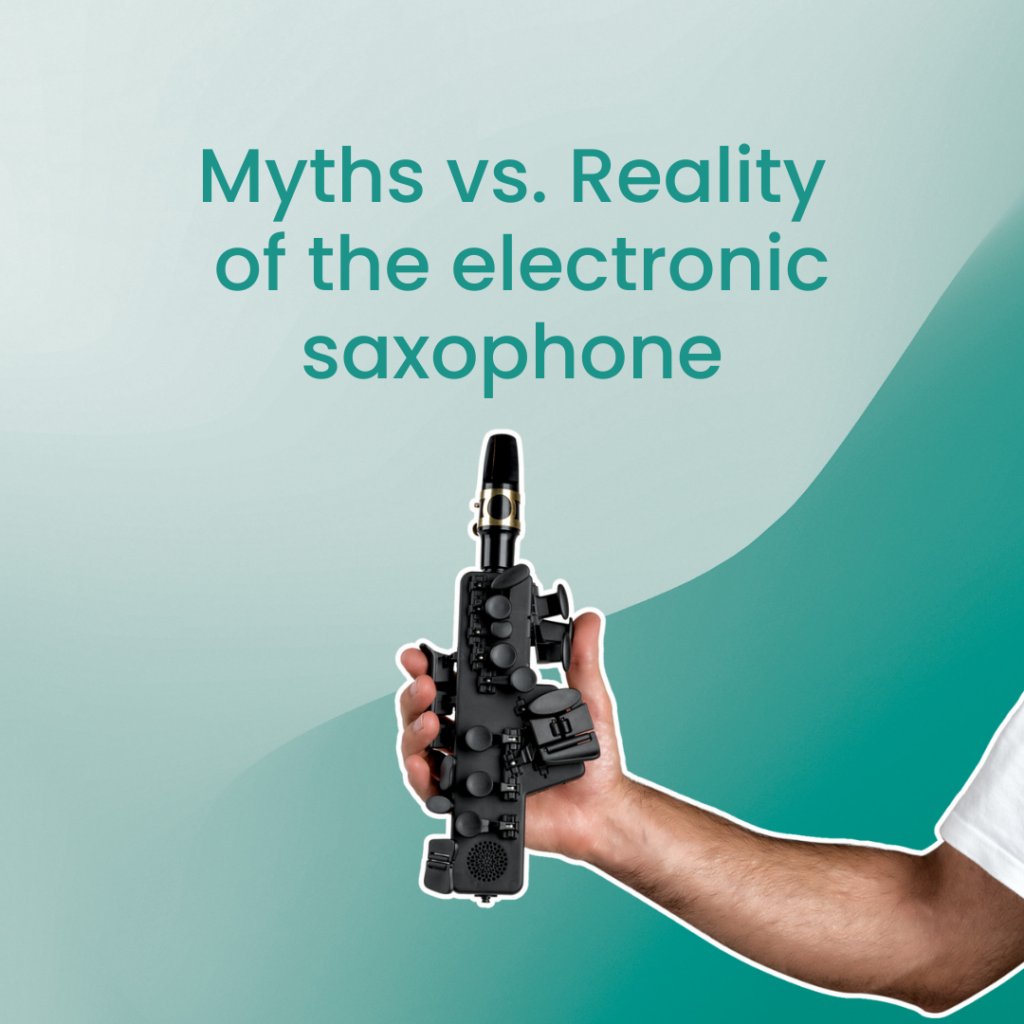The truth behind the myths
If you’ve been around the music scene for a while, especially as a sax player or fan, chances are you’ve heard some buzz about the electronic saxophone. Maybe you’ve even heard a few rumors, both good and bad. But what’s the real deal? Is it just a flashy gadget, or can it really hold its own?
Let’s break down some of the most common myths and get to the truth about this instrument!
Myth #1: The electronic saxophone Is just a toy
This one’s pretty common. Some folks think that because something’s digital, it can’t be serious.
It gets lumped into the same category as novelty items, like it’s only for beginners or people who are just messing around.
Reality: The electronic sax is far from a toy. In fact, professional musicians use it on stage and in the studio. Take Marco Scipione, for example. He’s a highly respected saxophonist, and he integrates the electronic sax into his performances alongside the traditional acoustic one. With the electronic sax, he can switch between different tones and effects on the fly, adding layers to his live shows that are super dynamic.
For something portable and powerful, there’s the Travel Sax. Don’t be fooled by its size. It’s a serious piece of gear. Perfect for practice or small gigs when you don’t want to lug around a full-size sax.

Myth #2: It can’t replicate the sound of a traditional saxophone
A lot of musicians hesitate here, thinking that the electronic sax won’t capture the warm, rich tones they love about their acoustic sax. They’re worried it’ll sound robotic or just too digital.
Reality: The electronic sax isn’t here to replace the acoustic version; it’s more about expanding what you can do. For instance, the Roland Aerophone AE-30 doesn’t just replicate sax sounds, it can mimic everything from flutes to trumpets and even synthesizers. That opens up a world of creative possibilities.
Instead of thinking about it as a replacement, think of it as adding more tools to your creative toolbox. You can even layer it with effects like reverb, delay, or chorus. Jazz musicians like Seamus Blake have been using electronic saxophones to push the boundaries of what’s possible, blending traditional sax melodies with modern effects.

Myth #3: It’s hard to learn and use
This one makes sense, learning any new instrument can be a bit intimidating, especially when you think about digital interfaces, buttons, and settings. If you’re used to the straightforward feel of an acoustic sax, it might seem like a lot to take on.
Reality: The truth is, if you can play a regular sax, you’re already most of the way there. Electronic saxophones, like the Yamaha YDS-150, are designed to feel just like their acoustic counterparts. The fingerings are the same, and the response is similar, so you can pick it up and start playing almost immediately.
Myth #4: It‘s only for modern music
Some people think electronic saxophones only fit in genres like EDM or pop. If you’re into jazz or classical music, you might assume this isn’t for you.
Reality: This couldn’t be further from the truth. The electronic sax is super versatile. In jazz, where improvisation is everything, it gives players more ways to experiment with new sounds. Some have even used it in classical settings to add a fresh twist to traditional compositions. With the ability to control and modify sound so precisely, it can fit into any genre.
Artists like Steve Tavaglione have been using electronic wind instruments in jazz, fusion, and even film scores. The flexibility these instruments offer lets musicians create textures that just aren’t possible with an acoustic sax alone.
Myth #5: It’s too expensive to be worth It
Music gear can be pricey, and it’s easy to wonder if an electronic sax is worth the investment, especially if you’re only going to use it occasionally.
Reality: While the upfront cost might seem a bit high, it’s comparable to other professional-level instruments. Plus, when you think about what you get: portability, versatility, and sound customization…the investment makes sense.
And if you live in an apartment or have close neighbors, the electronic sax solves one major problem: you can practice at any time without bothering anyone. Just plug in your headphones, and you’re good to go.
Don‘t Let the myths stop you!
The electronic sax is a game-changer for musicians who want to explore new sounds and push their creative limits. Whether you’re looking to practice quietly at home, try out new sonic landscapes, or bring something different to your performances, this instrument offers so much more than people realize.
Curious? Give one a try! You might just discover a whole new level of expression you didn’t know was possible.
Explore more content!
- Top 5 gadgets for Sax Players
- Electronic VS Classic Saxophone
- Top 5 Easy Alto Saxophone Songs for Beginners!
- Electronic Saxophones, the ultimate guide!
- Top 5 Youtube channels for Saxophonists!
- How to play the saxophone without disturbing your neighbors?
- Travel Instruments, every musician must know
Happy reading!
Odisei Music Team
